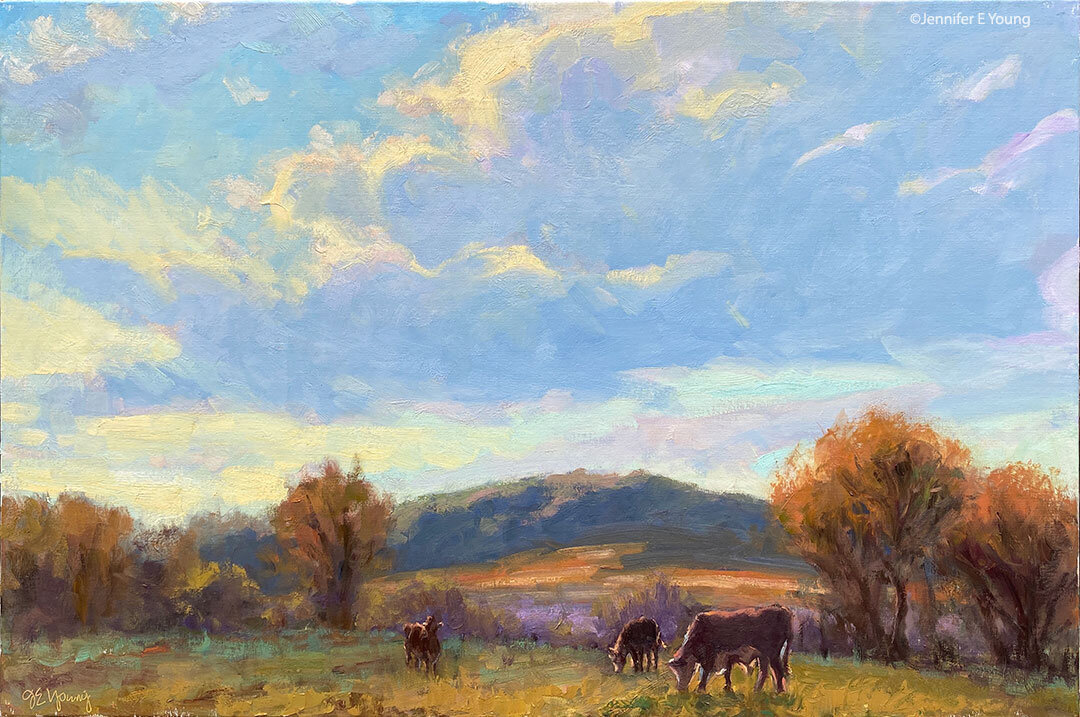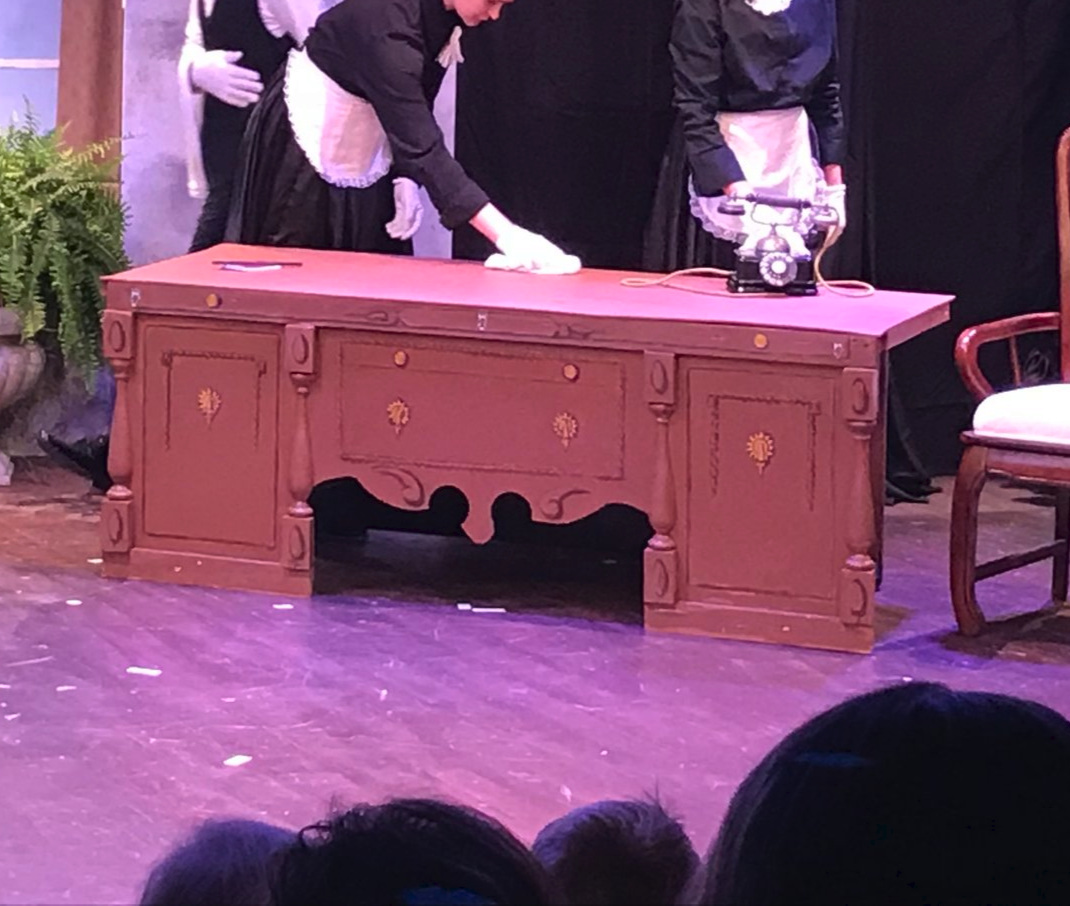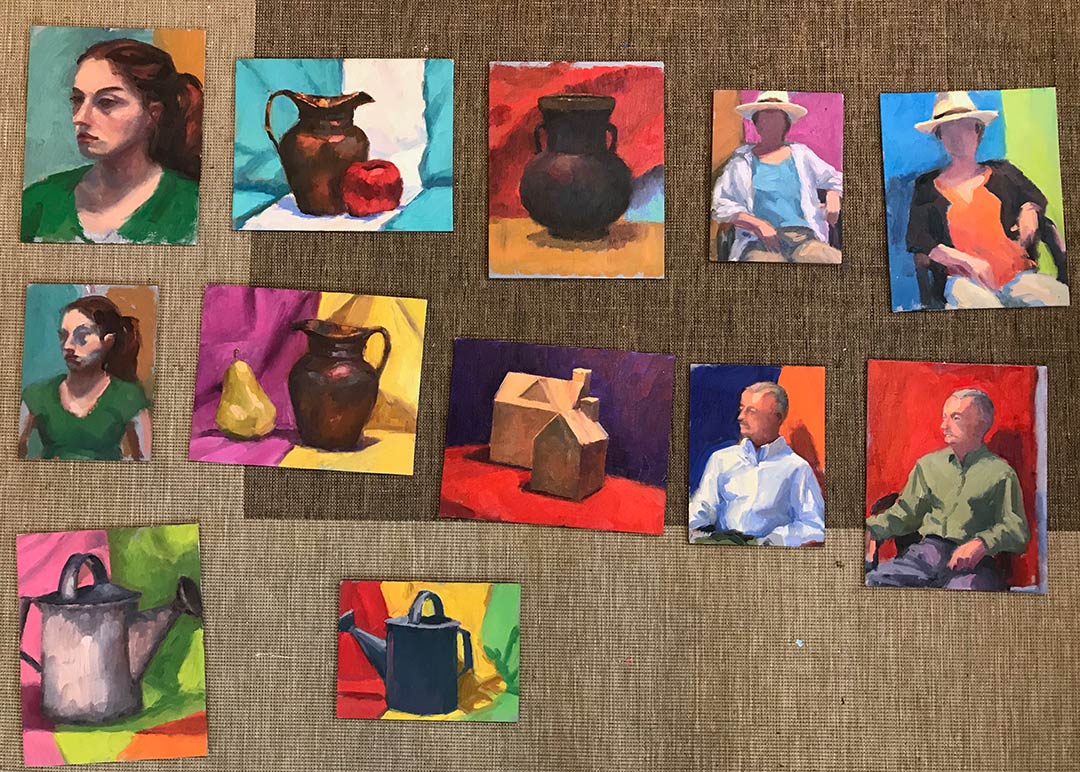Alla prima outdoors; plein air at the park
/Keeping to the topic of alla prima painting, here is a morning plein air landscape I did this week on a visit to Bryan Park:
Young's Pond is actually the name of this pond (though there's no relation to yours truly, and that's not what drew me to the location to paint it!) It wasn't until I was researching online that I even knew this pond's name or history (part of a former 18th century gristmill).
Bryan Park is a neighborhood park with lovely old azaleas that put on a great show earlier in the spring. It's a good "go to" spot for me when I need an easy-access opportunity to paint outdoors, as it's very close to my home (a hefty walk with all my plein air gear, but definitely within cycling distance). Even so, it's taken me a little while to warm up to it as a painting site. I find that sometimes with certain locations I need to visit them several times before I can hit it at the right time/place/day to inspire a painting. I've gone there a couple of times already in the early spring when the azaleas were in bloom, and even though the flowers were pretty, I just could not find anything I wanted to compose. I must have looked like a strange and suspicious character, just walking around with a big floppy hat and shabby backpack, staring at trees and bushes in a half-trance, (except for the times when I'd peer through the square formed with my hands)--All to no apparent end. The things we do for art!
This time since the season is over, I wasn't lured to the azelea gardens and instead went directly to the pond. I got there early enough so that the light in the distance was still soft, though the shadows and highlights of the middle distance held enough contrast to interest me. I also liked the little pond "islands", the flowering shrubs growing wild on the bank, and the curved retaining walls. Now that I know how the sun travels over this spot, I've also noted an adjacent site that I think will provide a nice back-lit scene in the later afternoon/early evening. I will return again soon when the time is right, and have another go at Young's Pond. Who knows, maybe it will become a favorite plein air location after all?
p.p.s. For those who may be unfamiliar with the term "alla prima" that I've bandied about in these last few posts, it's an Italian phrase that literally means "at first". In art terms it refers to a painting done with a direct approach, usually completed in one sitting (wet-into-wet).















